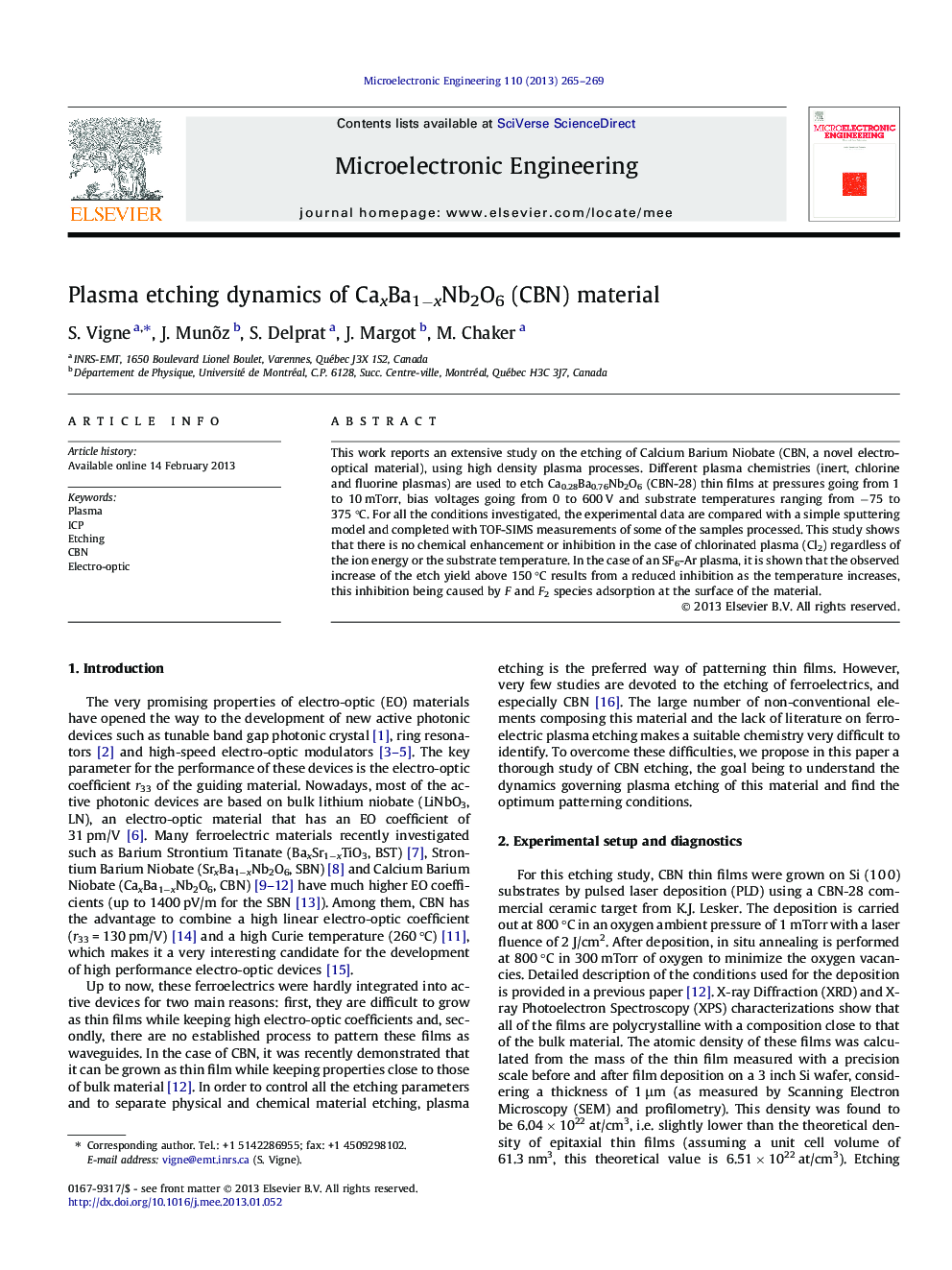| Article ID | Journal | Published Year | Pages | File Type |
|---|---|---|---|---|
| 544274 | Microelectronic Engineering | 2013 | 5 Pages |
This work reports an extensive study on the etching of Calcium Barium Niobate (CBN, a novel electro-optical material), using high density plasma processes. Different plasma chemistries (inert, chlorine and fluorine plasmas) are used to etch Ca0.28Ba0.76Nb2O6 (CBN-28) thin films at pressures going from 1 to 10 mTorr, bias voltages going from 0 to 600 V and substrate temperatures ranging from −75 to 375 °C. For all the conditions investigated, the experimental data are compared with a simple sputtering model and completed with TOF-SIMS measurements of some of the samples processed. This study shows that there is no chemical enhancement or inhibition in the case of chlorinated plasma (Cl2) regardless of the ion energy or the substrate temperature. In the case of an SF6-Ar plasma, it is shown that the observed increase of the etch yield above 150 °C results from a reduced inhibition as the temperature increases, this inhibition being caused by F and F2 species adsorption at the surface of the material.
Graphical abstractFigure optionsDownload full-size imageDownload as PowerPoint slideHighlights► We study the plasma etching of the CaxBa1−xNb2O6 in various gases for varying pressures and substrate temperatures. ► Etching at higher pressure increases the redeposition rate and therefore, surface inhibition decreases the etching yield. ► Etching with chlorine is purely physical between −75 and 375 °C in all the conditions. ► Etching with fluorinated gas is inhibited below 150 °C by adsorption of fluor species. ► Desorption of these fluorinated species occurs at higher temperature, removing the surface inhibition.
